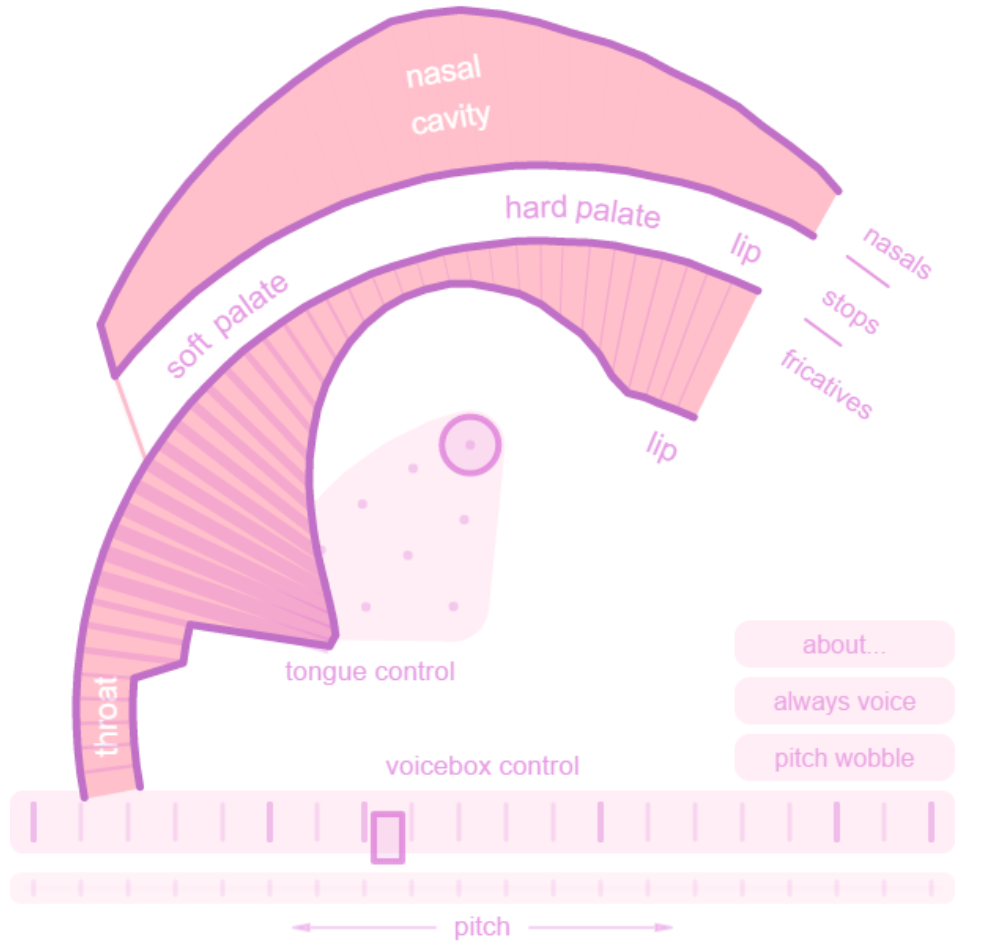Anyone who’s ever had a voice instructor has been treated to long attempted explanations of what’s going on in the physical mechanisms associated with singing. But even though that’s inside your mouth and throat, it can be tough to visualize.
This Web simulator is doubly interesting. One, it demonstrates how synthesized vocal sounds can mimic the real thing. But two, and maybe more interesting, it gives you a sense of how each physical component in your body impacts the sound of singing. And that could make your next karaoke session somehow deeply enlightening.
Oh yeah, it’s also weirdly fun to play with slash seriously annoy coworkers with. (Headphones, please!)

It’s recommended for use on multi-touch devices, so you might want to get your phone or tablet. But it’s also perfectly usable in browser on a desktop.
Pink Trombone is the work of developer Neil Thapen, who apparently spends the rest of his spare time working on game development. Digital Trends has a nice write-up with some background on how it came about, including the developer finding inspiration in his daughter.
The specific technique here is “articulatory speech synthesis.” And I could tell you all about that. Wait. No I can’t. But Wikipedia can – let’s read this together, shall we? (I know, I’m supposed to be like an expert or something. Don’t tell anyone.)
https://en.wikipedia.org/wiki/Articulatory_synthesis
I had no idea the theory behind speech synthesis can be traced back to 1791.
That sounds like the topic of a whole other article, the connection of the voice and electronic music. To anyone who would dismiss vocals as some kind of extra track you add to your instrumentals, I would hasten to point out that apart from voices being in everyone’s bodies and being around before even acoustic instruments, electronic music itself wouldn’t exist without the voice. The vocoder is arguably a model for the synthesis models to come, for instance.
And I’ll write that article. Uh… just as soon as I stop playing with this Web toy. I’m going to get back to that right now.